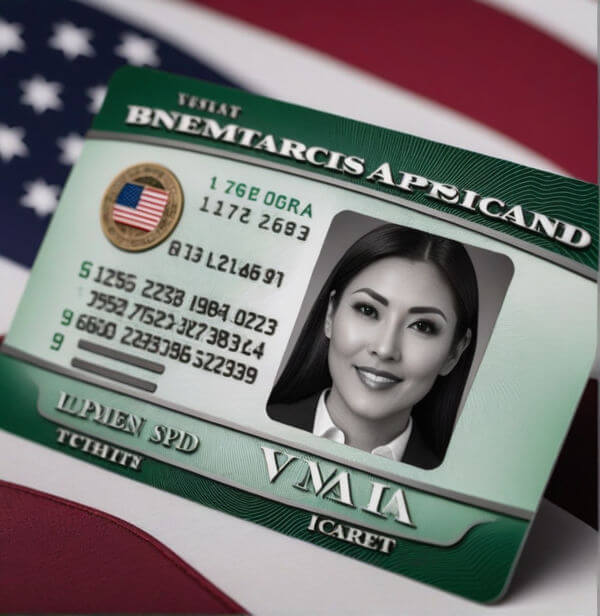
What to Expect: Family-Based Green Card Application Processing

Navigating the Green Card Acquisition Journey: Family-Based Applications
The pathway to obtaining a green card is a journey that varies widely in duration, influenced by multiple factors such as the application route and the operational pace of USCIS. For example, the process for a spousal or marriage-based green card may span from 13.5 to 37 months. Applicants keen on finalizing their family-based green card procedures understandably yearn for the moment they can physically possess their green card. Yet, this anticipation meets with the reality that the process is intricate and extends over time.
The timeline for receiving a family-based green card is contingent upon several critical aspects. These include the specific family relationship underpinning the green card request, the immigration status of the sponsoring relative (whether they are a U.S. citizen or a legal permanent resident), the applicant’s nationality, the geographical location of the green card application, and the potential need for USCIS to request further documentation to adjudicate your case. This guide zeroes in on the expected timelines for family-based green card applications, acknowledging that alternative routes to green card status, such as through employment opportunities or refugee/asylum statuses, follow their own unique timelines and procedures. By staying informed about the latest USCIS processing trends and proactively preparing for potential requests for additional evidence, applicants can navigate their journey with greater ease and confidence. Remember, each step forward, no matter how small, is a progression towards achieving your goal of securing a green card through family relationships.
Complete Process for Acquiring a Family-Based Green Card
The journey to obtaining a family-based green card unfolds through a series of steps, which remain consistent regardless of the nature of the relationship between the sponsor (either a U.S. citizen or a green card holder) and the beneficiary (the individual seeking the green card). This process encompasses:
- a) Submission of Form I-130 (“Petition for Alien Relative”) to establish the familial bond.
- b) Completion of Form I-485 (“Application for Adjustment of Status”) for beneficiaries currently within the United States.
- c) Completion of Form DS-260 (“Immigrant Visa Application”) for beneficiaries residing outside the United States.
This structured approach ensures that all necessary legal and procedural requirements are met, paving the way for the successful issuance of a family-based green card.
The duration to secure a green card primarily hinges on the waiting period between submitting the form that verifies the family relationship and the actual application for the green card. USCIS periodically updates the processing times for all its forms quarterly. As per the latest data, the wait for Form I-130 spans several months, while Form I-485 takes approximately 20 months. For more up-to-date processing time estimates, Boundless closely monitors USCIS data monthly, categorized by application type and specific field office locations. As of September 2023, our analysis provides the following median processing timelines, offering a clearer insight into current wait periods for applicants. This approach helps applicants set realistic expectations regarding their green card application process.
Marriage-Based Green Card Timelines for Spouses of U.S. Citizens
For individuals married to U.S. citizens and residing within the United States, the average processing time for a marriage-based green card ranges from 13.5 to 20.5 months. Those in such situations have the advantage of “concurrent filing,” meaning they can submit both their I-130 and I-485 forms simultaneously. Conversely, spouses of U.S. citizens who live outside the United States can expect the spousal visa process to take approximately 13.5 to 15 months on average. This distinction highlights the varying timelines based on the applicant’s current residence in relation to the United States.
Application Process for Spouses of U.S. Green Card Holders
Despite the “Final Action Dates” no longer being current, the “Dates for Filing” remain current within the F-2A category, indicating that spouses of U.S. green card holders are eligible to submit their green card applications at this time. However, it’s important to understand that the submission of an application does not equate to immediate processing; the review of applications for spouses of green card holders will commence only when the priority date becomes current. Specifically, for applicants from Mexico, the “Final Action Date” — also known as the priority date — has been adjusted back to November 1, 2018. For applicants from all other countries, the priority date has been set to September 8, 2020. This adjustment in priority dates is anticipated to extend the waiting period for green cards for spouses sponsored by Lawful Permanent Residents (LPRs).
Spouses of green card holders must patiently await the availability of a green card subsequent to the filing of Form I-130 by their sponsoring spouse and before initiating their green card application, whether they are applying from within the United States or through a U.S. consulate abroad. Typically, the wait for a green card to become available spans approximately two years, with the complete process extending to about three years in duration. This timeline may be prolonged for nationals from countries like Mexico, China, India, and the Philippines due to country-specific caps and demand. For spouses of green card holders currently residing in the United States, the estimated wait time for receiving a green card falls between 13.5 to 20.5 months. Conversely, for those living outside the United States, the anticipated wait time ranges from 33 to 37 months. These timelines reflect the complex and often lengthy process of securing a green card through marriage to a U.S. green card holder, underscoring the importance of careful planning and patience throughout the application journey.
Green Card Applications for Widows and Widowers of U.S. Citizens
Individuals who have lost their U.S. citizen spouse are eligible to apply for a green card, provided they initiate the application within two years following their spouse’s demise. The procedural steps and expected timeline for obtaining a green card in this context closely mirror those of the marriage-based green card pathway for spouses of U.S. citizens. However, instead of filing Form I-130, which establishes a familial relationship, widows and widowers are required to submit Form I-360, titled “Petition for Amerasian, Widow(er), or Special Immigrant.” This form serves as the foundational document asserting their eligibility for the green card under the widow(er) category.
Green Card Process for Parents of U.S. Citizens
Similar to the spouses of U.S. citizens, the U.S. government does not cap the number of green cards available to parents of U.S. citizens. This provision ensures a relatively swift path to obtaining a green card for parents, with the process generally concluding within 1 to 2 years from the date of application. The expedited nature of this green card category is due to the immediate relative status that parents of U.S. citizens enjoy, facilitating a more streamlined and prioritized application process.
For both widows, widowers, and parents of U.S. citizens, these immigration pathways underscore the U.S. government’s commitment to reunifying families and offering support through the immigration process. Whether through the special provisions for those who have suffered the loss of a U.S. citizen spouse or through the prioritized processing for parents, the U.S. Citizenship and Immigration Services (USCIS) provides avenues to help maintain familial bonds and support through immigration benefits.
Green Card Eligibility for Minor Children of U.S. Citizens
Minor children (those under 21 years of age) of U.S. citizens are afforded the same priority as spouses and parents when it comes to green card allocation, meaning there’s no cap on the number of green cards issued to them. The timeline for minor children of U.S. citizens to receive a green card typically ranges from 1 to 2 years following the initiation of the application process.
Green Card Process for Minor Children of Green Card Holders
For minor children of green card holders, the process involves awaiting the availability of a green card subsequent to the sponsorship filing Form I-130. Before proceeding with their green card application—whether domestically within the United States or through a U.S. consulate abroad—they must wait for their priority date to become current. Falling under the same priority category as spouses of green card holders, minor children typically experience a shorter waiting period compared to other family-based categories. On average, the wait for a green card’s availability is about two years, making the comprehensive process approximately three years in duration. However, for children from countries with higher demand for green cards, such as Mexico, China, India, and the Philippines, this process may extend slightly longer.
Green Card Processing for Unmarried, Adult Children of U.S. Citizens
Estimated Processing Duration: Typically, 7-8 years; extending beyond 10 years for Filipino nationals and over 20 years for Mexican nationals. Unmarried, adult offspring of U.S. citizens face a prolonged wait for green card availability following the submission of Form I-130 by their American parent. This duration is notably lengthy for Mexican citizens due to high demand and limited visa allocations.
Green Card Processing for Unmarried Adult Children of Green Card Holders
Overall Processing Timeframe: Approximately 8-9 years; surpassing 10 years for Filipino nationals and exceeding 20 years for Mexican nationals. The journey to green card acquisition for unmarried, adult children of green card holders encompasses an extended waiting period for visa availability, significantly impacted by the applicant’s country of origin.
Green Card Processing for Married Adult Children of U.S. Citizens
Comprehensive Processing Period: Around 13-14 years; over 22 years for nationals of the Philippines and Mexico. Married adult children of U.S. citizens encounter one of the longest waits for green card issuance, with the timeline stretching substantially for individuals from countries with high visa demand.
Green Card Processing for Siblings of U.S. Citizens
Timeline Overview: The journey to securing a green card for siblings of U.S. citizens spans approximately 14-16 years. However, this duration extends to over 16 years for Indian nationals, more than 20 years for Mexican nationals, and exceeds 24 years for Filipino nationals. Unlike immediate family members such as spouses, parents, and minor children of U.S. citizens, who face no caps, all other family-based green card categories are subject to annual limits. Consequently, siblings must wait their turn in a queue until a green card becomes available.
Understanding Green Card Timelines
The path to obtaining a green card is influenced by the relationship between the sponsor and the beneficiary, as well as by individual circumstances and the applicant’s country of origin. The process may be further prolonged if USCIS requests additional documentation or clarification, necessitating extra time for application processing. This underscores the variability and complexity of the green card application process, highlighting the need for patience and comprehensive preparation by all applicants.